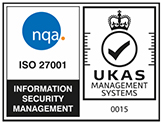There are 5 nerves connecting the vertebrae in the neck to the upper arm, which join together to form a complex union, a bit like a busy railway junction. This union of 5 nerves, as well as the formation of different nerves from that union that supply the whole of the arm is called the brachial plexus.
Occasionally the nerves in the neck can be damaged - ranging from a ‘stretched nerve’ which will resolve - to one where there is complete division with permanent neurological dysfunction.
Erb’s Palsy is a nerve injury to the upper fibres of the nerves supplying the muscles of the arm. The majority of cases where this condition arises is as a consequence of traction during delivery of a baby.
This can be predictable in a number of cases, such as where shoulder dystocia can occur (see the earlier article on shoulder dystocia) such as in large babies in pregnant women with small hips, for example. Other causes include excessive traction on the head and neck during delivery. During breech deliveries, the pull on the feet can result in significant (and abnormal) forces onto the nerves in the brachial plexus. Occasionally other injuries can be associated with brachial plexus injuries such as collar-bone fractures.
However, it can occur without any risk factors being present. It is also seen in older children who have experienced direct violence to the upper fibres of the brachial plexus, e.g. from traction or direct trauma.
The residual neurological deficits depend on the extent of nerve damage; it can be bruising which will resolve to complete disruption. Erb’s Palsy relates to damage to the union of the nerves from the cervical nerves at cervical level 5 and 6. Damage to these upper fibres causes diminished or complete loss of sensation to the deltoid muscle, the biceps and another set of muscles in the upper arm that connect with to the lower arm known as the ‘brachialis’. In Erb’s Palsy the arm hangs down to the side of the body, and is turned inwards. The classic position is that of the ‘waiter’s tip’.
If there is extensive damage this can lead to asymetrical growth, with stunting of the affected arm. The most minimal features may be smaller fingertips to shortening of the arm, with decreased muscle mass. In severely affected cases, the patient may not be able to elevate the arm above the level of the shoulders, and problems with circulation can arise due to the inadequate growth of the arm.
Initial assessment should involve physiotherapy assessment and in severe cases electrical stimulation has been used. Orthopaedic advice may be sought to provide guidance on the potential growth of the affected arm. Where there is complete disruption of the nerve, neurosurgical intervention may be needed.
Most children with Erb’s Palsy related to their delivery improve in the first year of life; those who do not improve have a worse long term outlook. In this latter group there is an increased likelihood of the development of arthritis.
Establishing if there could be a legal case to answer
The history of the circumstances of the injury to the brachial plexus should be explored. Some causes relate to unforeseen situations and are not avoidable; whilst others are as shown above.
The assessment of the nerve damage, the timing of interventions including physiotherapy (most effective in the first months following injury) and managing other associated problems have to be taken into account when considering prognosis (the long term outlook) and causation (did the injury arise as a result of negligence).
To establish if you or someone you know may have a potential claim for clinical negligence following the type of injury described above, or any other type of injury, please do not hesitate to contact the Clinical Negligence Team at Dutton Gregory Solicitors on 01202 315005 / 01962 844333 or 023 8022 1344.






